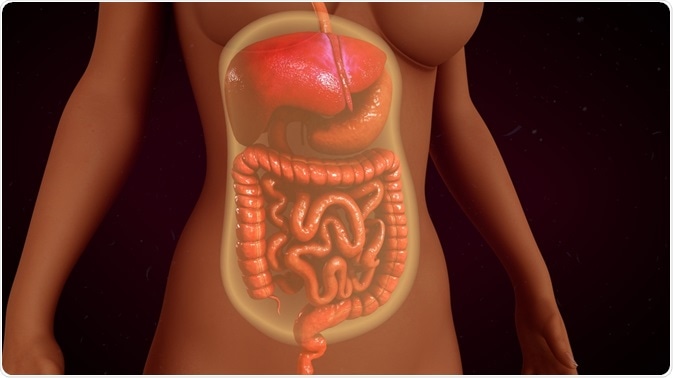Peritonitis is an infection within the peritoneum, the supportive membrane lining that surrounds and protects the internal abdominal organs. There are multiple types of peritonitis: spontaneous, secondary, and tertiary.
 Image Credit: sciencepics / Shutterstock.com
Image Credit: sciencepics / Shutterstock.com
Spontaneous peritonitis is an infection within the peritoneal fluid and occurs as a result of cirrhosis of the liver (induced by excessive alcohol consumption or infection with the hepatitis B or C virus) or within many patients undergoing peritoneal dialysis.
Secondary peritonitis occurs as a result of another medical condition that allows bacteria to enter the peritoneal cavity, such as traumatic injury to the abdominal organs, a ruptured appendix, or perforation of the stomach or intestinal wall due to peptic ulcer. Tertiary peritonitis, although rare, is a serious medical condition characterized as a persistent peritoneal infection that resists initial medical interventions.
It is defined as peritonitis that persists for 48 hours after standard care. It is important to understand the underlying cause of peritonitis, as this will guide subsequent treatment decisions.
Antibiotics for peritonitis
A standard 5-7 day course of antibiotic treatment can kill pathogenic bacteria to eliminate acute infection and reduce future complications. Antibiotics are often given in the case of spontaneous peritonitis. Antibiotics, given alone as monotherapy or given in together in combination therapy, should be broad-acting in nature and target both gram-positive and gram-negative bacteria.
Commonly used antibiotics for the treatment of peritonitis include beta-lactams (penicillins), carbapenems (beta-lactamase−resistant beta-lactams), cephalosporins (semi-synthetic beta-lactams), and quinolones (such as ciprofloxacin).
Peritoneal dialysis patients often experience peritonitis at the catheter entry and exit site. Antibiotics are typically administered to fight this acute infection, and studies have shown that an initial antibiotic dose given prophylactically at the time of catheter placement can prevent subsequent infections.
The International Society for Peritoneal Dialysis also recommends that patients and their caregivers use exceptional hygiene when performing dialysis and working around the catheter site. Infectious agents such as Staphylococcus aureus and many other bacterial strains can be passed to the patient by healthcare workers.
Peritonitis, Causes, Signs and Symptoms, Diagnosis and Treatment.
Surgery for peritonitis
In the case of a patient with a perforated stomach or intestine, ruptured appendix, or traumatic injury to the abdominal organs, laparoscopic surgery is usually the first line of treatment to repair damaged tissue, control the source of bacteria, and clear existing toxins. Before surgery begins, however, diagnostic imaging tests should be performed in order for the surgeon to have a clear idea of the impacted area or underlying bacterial source.
Depending on the underlying cause of bacterial contamination, surgery may be combined with lavage (cleaning out the peritoneal cavity to remove residual bacteria) and/or a course of antibiotics. For example, a nonperforated appendix that has been caught early may be safely removed by surgery and lavage, while a perforated and inflamed appendix that is releasing pus into the abdominal cavity may require surgery, lavage, and antibiotics.
Tertiary peritonitis is often attributed to the presence of antibiotic-resistant bacteria that are not affected by first-line antibiotics. Patients with tertiary peritonitis may be treated with stronger-acting antibiotics and may have to undergo relaparoscopy (a second laparoscopic surgery) in order to identify the root cause of infection.
References
Further Reading